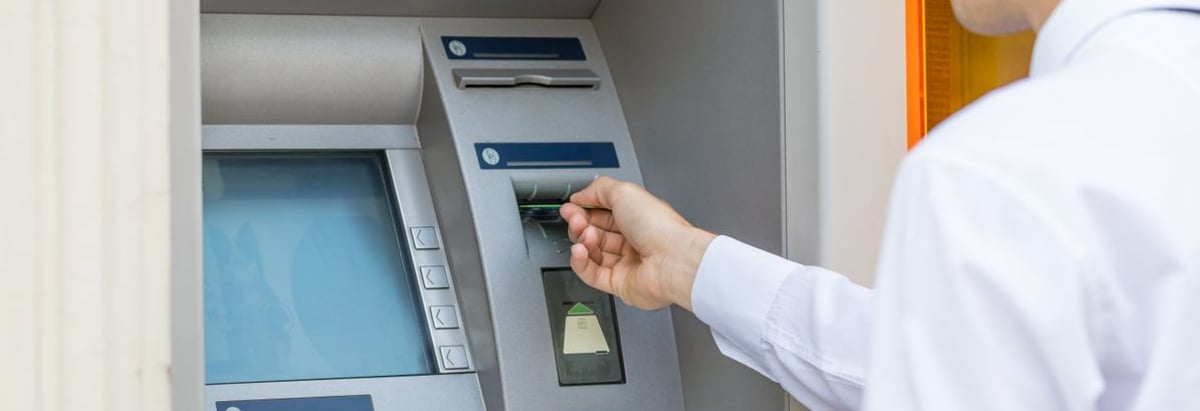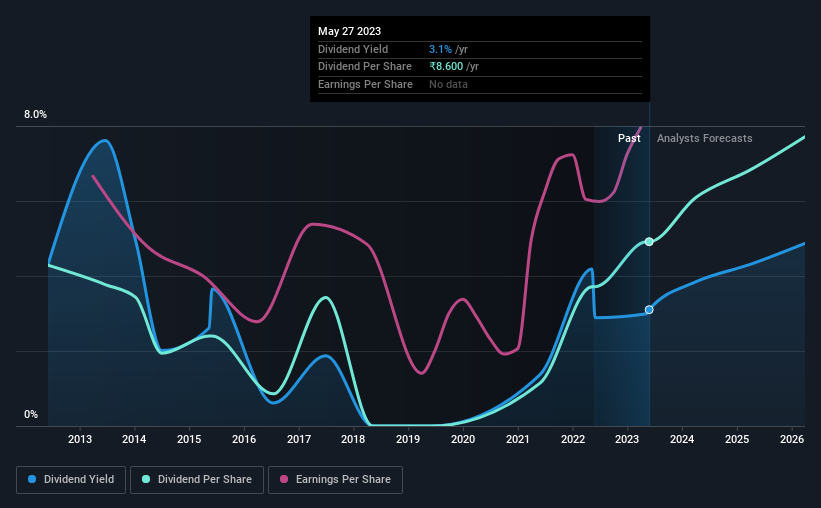Indian Bank's (NSE:INDIANB) Shareholders Will Receive A Bigger Dividend Than Last Year

Indian Bank (NSE:INDIANB) has announced that it will be increasing its dividend from last year's comparable payment on the 19th of July to ₹8.60. This makes the dividend yield 3.1%, which is above the industry average.
See our latest analysis for Indian Bank
Indian Bank's Dividend Forecasted To Be Well Covered By Earnings
A big dividend yield for a few years doesn't mean much if it can't be sustained.
Having distributed dividends for at least 10 years, Indian Bank has a long history of paying out a part of its earnings to shareholders. While past records don't necessarily translate into future results, the company's payout ratio of 19% also shows that Indian Bank is able to comfortably pay dividends.
The next 3 years are set to see EPS grow by 65.8%. Analysts estimate the future payout ratio will be 18% over the same time period, which is in the range that makes us comfortable with the sustainability of the dividend.

Dividend Volatility
The company has a long dividend track record, but it doesn't look great with cuts in the past. The dividend has gone from an annual total of ₹7.50 in 2013 to the most recent total annual payment of ₹8.60. This means that it has been growing its distributions at 1.4% per annum over that time. It's encouraging to see some dividend growth, but the dividend has been cut at least once, and the size of the cut would eliminate most of the growth anyway, which makes this less attractive as an income investment.
The Dividend Looks Likely To Grow
Growing earnings per share could be a mitigating factor when considering the past fluctuations in the dividend. We are encouraged to see that Indian Bank has grown earnings per share at 10% per year over the past five years. With a decent amount of growth and a low payout ratio, we think this bodes well for Indian Bank's prospects of growing its dividend payments in the future.
We Really Like Indian Bank's Dividend
Overall, we think this could be an attractive income stock, and it is only getting better by paying a higher dividend this year. Distributions are quite easily covered by earnings, which are also being converted to cash flows. All in all, this checks a lot of the boxes we look for when choosing an income stock.
Companies possessing a stable dividend policy will likely enjoy greater investor interest than those suffering from a more inconsistent approach. At the same time, there are other factors our readers should be conscious of before pouring capital into a stock. For example, we've identified 2 warning signs for Indian Bank (1 is a bit unpleasant!) that you should be aware of before investing. Looking for more high-yielding dividend ideas? Try our collection of strong dividend payers.
If you're looking to trade Indian Bank, open an account with the lowest-cost platform trusted by professionals, Interactive Brokers.
With clients in over 200 countries and territories, and access to 160 markets, IBKR lets you trade stocks, options, futures, forex, bonds and funds from a single integrated account.
Enjoy no hidden fees, no account minimums, and FX conversion rates as low as 0.03%, far better than what most brokers offer.
Sponsored ContentNew: AI Stock Screener & Alerts
Our new AI Stock Screener scans the market every day to uncover opportunities.
• Dividend Powerhouses (3%+ Yield)
• Undervalued Small Caps with Insider Buying
• High growth Tech and AI Companies
Or build your own from over 50 metrics.
Have feedback on this article? Concerned about the content? Get in touch with us directly. Alternatively, email editorial-team (at) simplywallst.com.
This article by Simply Wall St is general in nature. We provide commentary based on historical data and analyst forecasts only using an unbiased methodology and our articles are not intended to be financial advice. It does not constitute a recommendation to buy or sell any stock, and does not take account of your objectives, or your financial situation. We aim to bring you long-term focused analysis driven by fundamental data. Note that our analysis may not factor in the latest price-sensitive company announcements or qualitative material. Simply Wall St has no position in any stocks mentioned.
About NSEI:INDIANB
Established dividend payer and good value.
Similar Companies
Market Insights
Community Narratives




